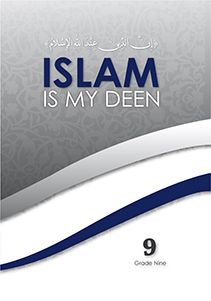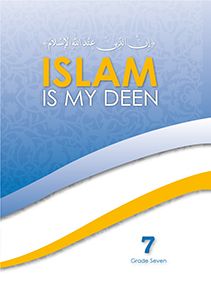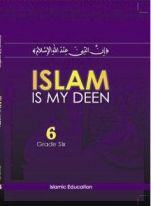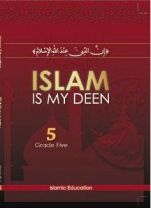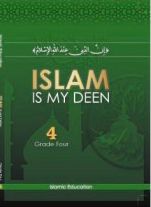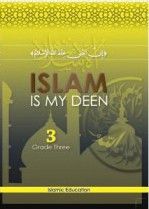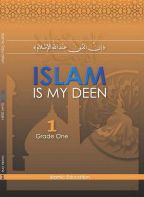ISLAM is My Deen
General Properties of the Series “ISLAM IS MY DEEN”
The series targets at teaching Islamic Education through its basic doctrines by concentrating on the different objectives in teaching Islamic Education whether for its heartily objectives that accommodate the formation and bolstering faith and behavioral objectives that deals with different skills like reading, learning and proper speech.
General objectives for teaching Islamic Education
1. Knowledge and behavioral skills
– Knowledge building and developing thinking skills for students
– Refining the student’s personality through values and attitudes.
– Realizing psychological stability and care for the student’s health.
– Enabling the student to acquire specific skills during the growing stages.
2. Special objectives for teaching Islamic Education
– Maintain liaison with the Holy Quran and Sunna
– Bolstering proper understanding of Islamic terminology in light of the Holy Quran
and Holy Sunna.
-Envisioning world and social commandments in the Holy Quran and Sunna.
Different Sharia branches dealt with inn the series
1. The Holy Quran
2. The Islamic faith
3. Fiqh (Islamic jurisprudence)
4. Hadeeth
5. The refining of characters
6. Al Sira Al Nabawiyya ( The Prophet’s biography)
Teaching methods
1. Story
2. Citing proverbs
3. Taking an example from (assimilation)
4. Religious sermon
5. Dialogue
6. Questioning
7. Noticing and experiencing
Purposes and sciences of Hadeeth & the biography of the Prophet.
1. Appreciation of the Hadeeth , its sciences and deepening the association between them in understanding and practice (the essence of Hadeeth and its associated sciences)
2. Emulating our Prophet Mohammad (PASBUH) and learning his biography and citing examples of the good behavior of his predecessors. (Basic of the Prophet’s biography).
Basis of choosing the Prophet Sunna for “Islam is my Deen” series
1. Harmony in chosen topics with the mental abilities and the educational level of the student.
2. Variety of topics so that it is not limited to Hadeeth only, but goes beyond to scientific Hadeeth and translations etc.
3. The need for students for topics in their practical life in terms of building among other aspects, their personality and culture.
4. Connecting it with other units of the curriculum for realizing integration and cohesion in a supportive way that explains and bolsters idioms and information enclosed.
5. Limitation and easiness without many details that exhaust the student, as all Hadeeths are mostly short and simple in expression.
6. Inclusion of values and directions that the curriculum strives to give the students through conclusions from educational/ learning situations
7. Projecting the illustrious model of Prophet Mohammad (PASBUH), life of “Sahaba”, followers and affiliated, in addition to the benefits of Islamic legislation, moderation and “wasat” (middle option) in application.
8. Fighting myths and legends and false beliefs that people inherited, seeping through to students from their social environment, by demonstrating verified stories about the Prophet Mohammad (PASBUH) in this context to be a good argument for the student


